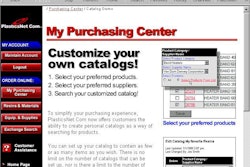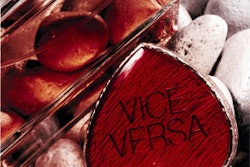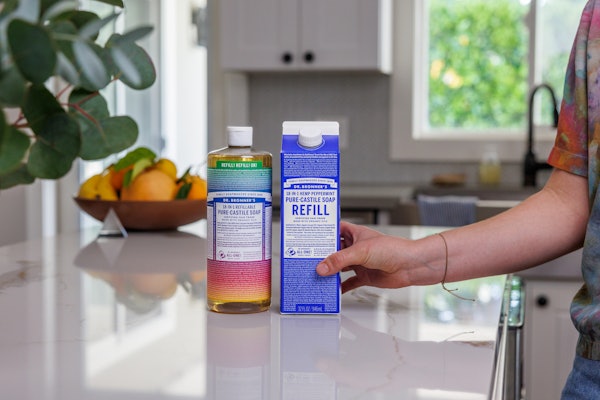The final pieces to the FDA’s new, eagerly awaited 120-day packaging appoval program are falling into place amid a growing mystery: Packaging suppliers and their customers are ignoring it! The agency finalized last August a rule containing exemptions for filing environmental assessments with pre-manufacture notifications (PMNs) for new food contact substances (FCS). That may help to get the PMNs rolling in. But maybe not. What happens when Congress funds a new $6 million/year program demanded by resin suppliers and packaging buyers and then hardly anybody uses it? Although the PMN program formally opened for business Jan. 18, 2000, and about 25 PMNs have since been filed, that number is far below what the industry and FDA had expected. “We and they are puzzled,” says Steve Hentges, a spokesman for the American Plastics Council. “It has been surprisingly quiet.” The program is open to food additives that are food-contact substances. Notification must include information on the identity and intended use of the FCS and describe the basis for a notifier’s determination that the intended use is safe. The key is that the amount and quality of documentation is far less than what had been needed when a packaging supplier was required to submit an indirect food additives petition. That was the only previous way of getting new packaging approved by the FDA. The FDA has committed to examining PMNs for new packages that are clearly safe within 120 days. If the agency does not object to the PMN within 120 days, the company is free to go to market. In the past, the FDA had 180 days to approve a petition, but in practice the agency requirements tied up companies for years. Often when final approval was eventually granted, a manufacturer’s buyers had lost interest in the packaging change. Mitchell Cheeseman, the FDA official in charge of the program, is also scratching his head over the mystery of the “missing” PMNs. “There is something going on out there,” he states. “I can’t imagine companies are not chomping at the bit.” But contrary numbers stare him in the face.
More petitions in past In 1999, packaging manufacturers submitted approximately 80 new threshold of regulation or indirect food-additive petitions to the FDA. Those are the kinds of petitions that could be submitted as PMNs. Yet Cheeseman says that by late summer, the FDA had received only about 25 PMNs. “I don’t think it is because the industry is being less innovative,” he explains. Hentges surmises that some companies may have held back PMNs because they have been legally required to submit environmental assessments. Cheeseman hopes to get some idea of what, if any, disincentives companies are facing when the FDA receives comments on the proposed rule it issued last July that laid out the ground rules for the program. The fact that there is draft guidance may have inhibited some companies from submitting PMNs. But most industry officials say that the proposed rule looks pretty good. Jerry Heckman, the Heckman in Keller & Heckman, the Washington law firm that represents resin suppliers and packaging manufacturers, calls the proposed rule on the PMN program “generally quite excellent.”
Considering all studies A PMN doesn’t have to contain an “exhaustive” discussion of every study and test upon which a “safe” determination has been made. But the discussion should be “thorough.” That would include a discussion of why the company might have disregarded any data that might appear to someone else (i.e. the FDA) as being inconsistent with a claim of “safety.” If the FDA feels that a PMN leaves way too much to the imagination, it won’t accept the PMN. The agency will ask the company for much more data and wait to receive that data before starting the 120-day clock. In instances where there appears to be only minor bits of missing data, the FDA will tell the PMN submitter to get the information back to the agency within a short, fixed time period and the 120-day clock will continue to run. The FDA’s Cheeseman says that the first 25 PMNs had “a pretty wide variation in quality.” Once PMN is approved (if it is not objected to in 120 days), the FDA may send the company a letter saying everything is fine, and the packaging can be sold. That letter might also clarify the identity or intended use of the FCS if there is a need to do so. But a letter won’t always be sent because FDA fears an administrative burden. But in addition, the FDA will also post the approved PMN on a publicly available inventory (http://vm.cfsan.fda.gov/ ~dms/opa-fcn.html). If the company decides to pull its PMN before the 120-day clock expires, and before the FDA gives its approval, none of the information in the PMN would be made public. When a PMN becomes final, only the company that submitted the notification may sell that package. This is different from when a petition is approved. In that instance, the FDA lists the specifications for a particular indirect food additive in federal regulation. That means any company can make a product that conforms to those specifications.
Some still confused Heckman says the question of what will be released “is still confusing.” There is no listing in the FDA proposed rule of the exact information the agency will release and won’t. Heckman notes that he has advised clients who have submitted petitions in the past to send the FDA a “Freedom of Information Act-ready” version of the petition. That is often what the FDA sends to a group like the Center for Science in the Public Interest that typically files an FOIA. A manufacturer that wants to sell new packaging that contains two or more FCSs that have never been approved by the FDA would have to submit a PMN for each of those FCSs. New packaging is more likely to be a melange of FCSs that have already been approved by the FDA. The agency says that these “formulation” packages are not subject to the PMN process. But some industry representatives asked to be able to voluntarily submit PMNs for new formulations to enhance their marketing efforts. The agency is apparently willing to accept formulation PMNs. If they flood the agency, that decision will be reconsidered.
The exceptions There are two instances where the door to the PMN program is closed to new FCSs. First, if the use of chemical X in a new package would increase dietary intake to a level greater than 1 ppm; or, in the case of a biocide, to a level greater than 200 ppb, a petition must be submitted. Ditto if there is one or more bioassays for the FCS that the FDA has not already reviewed and is not clearly negative for carcinogenicity. However, the agency’s concerns may be alleviated by other factors. For example, if the cumulative estimated daily intake (CEDI) is greater than 1 ppm, but the agency has established an applicable acceptable daily intake (ADI) for the substance that is greater than the CEDI, then a notification would “likely” be acceptable. The FDA expects to make a publicly available database of ADIs and CEDIs for regulated, exempted, and notified FCSs. Maybe that database is what packaging suppliers and buyers are waiting for in preparation for flooding the FDA with PMNs. But whatever it takes, FDA officials will clearly welcome it.






















